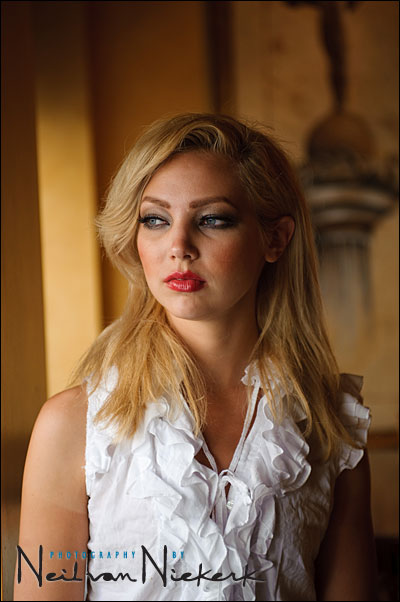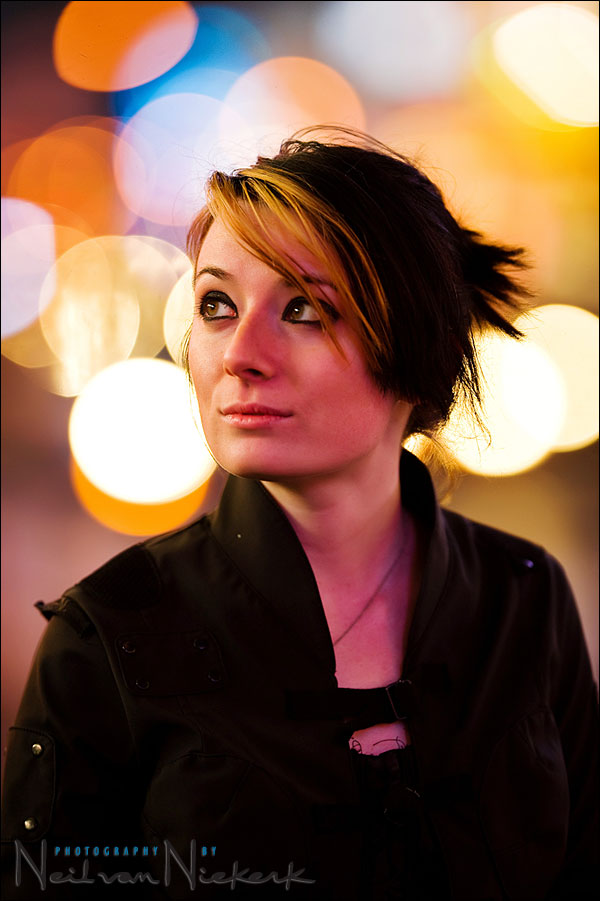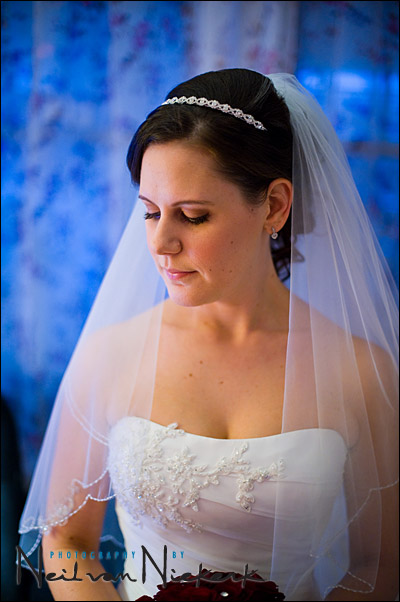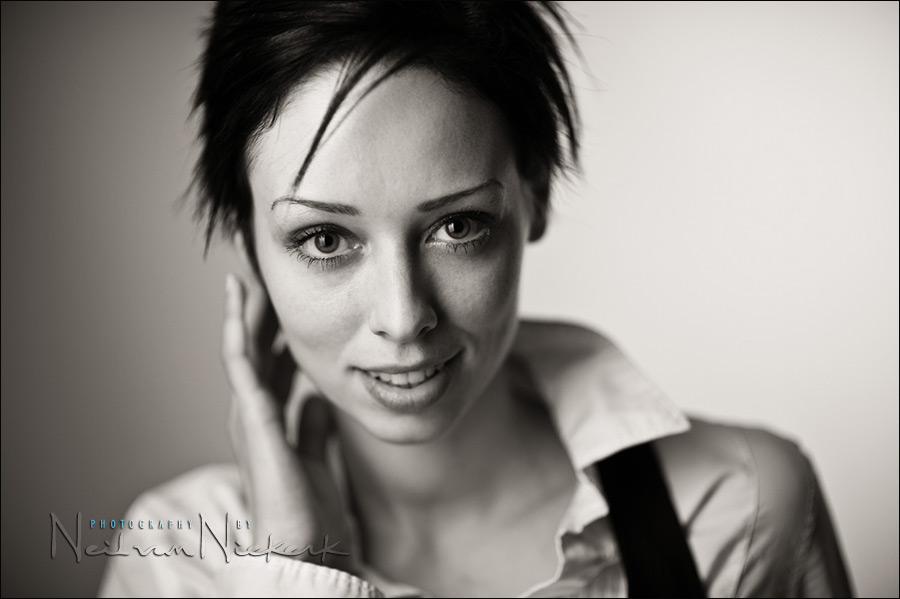more subtle fill-flash with your Nikon speedlight
In blending flash with available light, I am often after that delicate balance where the flash is just barely perceptible. This can be with flash as an equal partner to the available light, or with flash as a subtle fill-flash. But what I've found with my Nikon D3 bodies, when used with the SB-900, that the fill-flash flash is still too much, even when turned down -3EV on the flash exposure compensation. I've found similar with the various Nikon D300 and Nikon D700 bodies that attendees to my workshops use. In other words, this isn't just my cameras - this is repeatable with other Read more inside...
Bounce flash – balancing foreground and background exposure
Bounce flash - balancing foreground and background exposure
Lighting for the impromptu portrait of this little cutie was simple - just an on-camera speedlight, bounced up and over my left shoulder. This gives soft directional light. A simple technique that works every time when using on-camera flash indoors where there are light ceiling and walls around. Settings: 1/250th @ f4 @ 1000 iso; TTL flash My exposure settings was determined by the out-of-focus garden area outside, seen through a large window. It was over-cast, and therefore not super-bright. This meant that the bounce Read more inside...Light modifiers for on-camera flash
Light modifiers for on-camera flash
Event photography, and specifically weddings, can be a rushed and fast-moving, with some of the worst lighting conditions. But that doesn’t mean you can’t have great light from just an on-camera speedlight. By bouncing your on-camera flash with specific intent, you can achieve just that - beautiful, soft directional light. Light modifiers for on-camera speedlights all generally do the same thing - they spread a lot of light around, and but also throw some light directly forward. In a way, this gives a bare-bulb effect to the light from the Read more inside...NYC photo session with Nikon 200mm f2 AF-S VR
NYC photo session with Nikon 200mm f2 AF-S VR
I recently allowed myself a vanity purchase ... the Nikon 200mm f2 AF-S VR lens (B&H). Last year some time, after seeing another photographer's results with the Canon 200mm f2 IS, I was curious enough to rent one, check it out, and then lust after one. I posted a write-up and some images at the time. What got to me was how insanely sharp the lens was at f2 .. and of course the incredible dream-like bokeh at f2 imparting an impressionistic appearance to the background. With me reverting to Nikon recently, I picked up a used copy Read more inside...embracing tungsten light
wedding photography - working with incandescent light sources
As a wedding photographer I obviously shoot all the time in ares lit by tungsten / incandescent light sources. With modern D-SLRs and fast lenses it is no problem to actually use tungsten light as my main light source. The photo above from a recent wedding, is a typical image where I used an existing incandescent / tungsten light source for a beautiful but simple portrait. Here I photographed the bride by the light of a lamp in the living room. No flash was used - just the lamp and whatever other ambient light existed Read more inside...bokeh – the quality of blur
bokeh - the quality of blur
Bokeh is the term used to describe the quality of background blur in a photo, i.e. how pleasing the blur looks of the background areas. Since the softness of the background blur is usually more important than how the foreground items are blurred, bokeh usually relates to the background blur. The bokeh of a lens is influenced by numerous factors, including - the lens design, - specifically, how spherical aberrations are corrected, - the number of blades in the aperture mechanism, - focusing distance, - the actual aperture used will also affect Read more inside...home studio – portrait lighting setup in limited space
home studio portrait lighting setup in limited space
The photos in this article were shot with a fairly simple lighting setup in my dining room area. The main light to my left (model’s right) is the Westcott Bruce Dorn Strip Bank (18"x42") (B&H). The flashgun was a Quantum T2, but a speedlight would've worked just as well. In this small a space, you don’t need huge amounts of light. I used another Quantum T2 to light up the grey seamless background. I had the Quantum 12×12 softbox on this one, and feathered it to give me uneven light on the backdrop. I also had a snooted Nikon Read more inside...flash photography: dealing with reflective surfaces
dealing with reflective surfaces when using flash
Rooms with wooden paneling are notoriously difficult to shoot in when using flash. This is because of the tendency for the light source (flash) to create large hot spots on the wooden surfaces. I've had someone ask me specifically about these images from a recent wedding, and how I avoided those specular reflections in the wooden paneling. The best way to avoid them is to make sure you don't "see" your light-source / flash-tube in the wood paneling. Imagine the flat surface to be a mirror - and then from your angle of view Read more inside...a little less gray ..
I love color. I see in color. I really favor color over B&W images. But strong B&W images do have impact that is often lost with the distraction of color. Even though most of the photographs on my wedding photography blog are in color, there was a recent wedding which I showed as a set of B&W images instead. What happened was that when I started editing the images from that wedding for the blog, first one image, and then another, looked really good as a warm-toned B&W … and then I decided to go all the way and create a blog entry that consisted only of B&W Read more inside...
- « Previous Page
- 1
- …
- 15
- 16
- 17
- 18
- 19
- 20
- Next Page »








